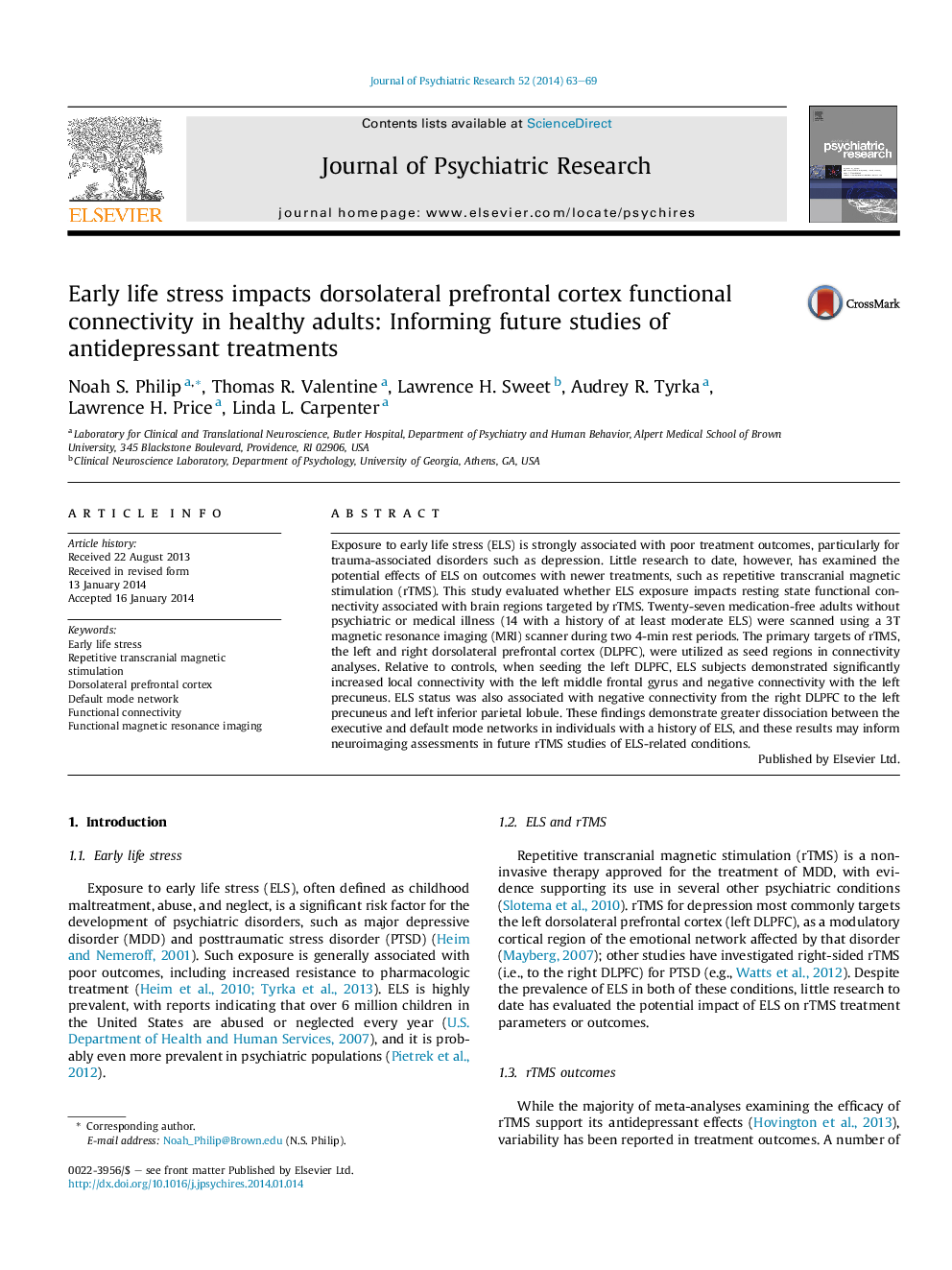| Article ID | Journal | Published Year | Pages | File Type |
|---|---|---|---|---|
| 327011 | Journal of Psychiatric Research | 2014 | 7 Pages |
Exposure to early life stress (ELS) is strongly associated with poor treatment outcomes, particularly for trauma-associated disorders such as depression. Little research to date, however, has examined the potential effects of ELS on outcomes with newer treatments, such as repetitive transcranial magnetic stimulation (rTMS). This study evaluated whether ELS exposure impacts resting state functional connectivity associated with brain regions targeted by rTMS. Twenty-seven medication-free adults without psychiatric or medical illness (14 with a history of at least moderate ELS) were scanned using a 3T magnetic resonance imaging (MRI) scanner during two 4-min rest periods. The primary targets of rTMS, the left and right dorsolateral prefrontal cortex (DLPFC), were utilized as seed regions in connectivity analyses. Relative to controls, when seeding the left DLPFC, ELS subjects demonstrated significantly increased local connectivity with the left middle frontal gyrus and negative connectivity with the left precuneus. ELS status was also associated with negative connectivity from the right DLPFC to the left precuneus and left inferior parietal lobule. These findings demonstrate greater dissociation between the executive and default mode networks in individuals with a history of ELS, and these results may inform neuroimaging assessments in future rTMS studies of ELS-related conditions.
